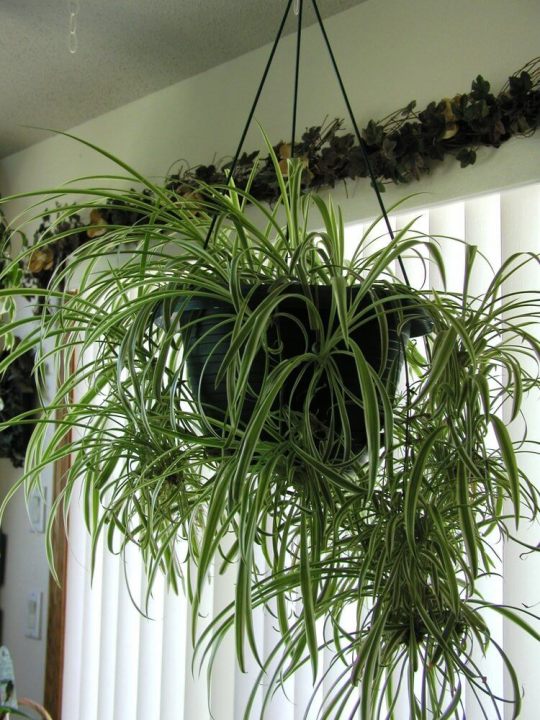#hydroponic
Note
are you a phytoponic?
That is a horrible accusation and if my roots weren't currently bound to a growth matrix in a tub of enriched water I'd punch you.
141 notes
·
View notes
Text

Hydroponic Strawberries, Tanah Rata, Cameron Highlands, Pahang - Strawberi Hidroponik, Tanah Rata, Cameron Highlands, Pahang - 水培草莓,丹那拉打,金马伦高原,彭亨, 2000.
#agriculture#fruits and vegetables#strawberries#hydroponic#tanah rata#cameron highlands#pahang#malaysia#2000#photographers on tumblr
20 notes
·
View notes
Text
My “big salad”/hydroponic pothos, George III looking gorgeous with some fresh water and plant food
7 notes
·
View notes
Photo

Plantery - Hydroponic Care App. Plantery will remind you to maintain and help you adjust your hydroponic condition easier. It is connected to your hydroponic device. https://www.pinterest.com/pin/367817494582932741/
16 notes
·
View notes
Text




Hydroponic Monstera Makes A Mossy Friend
©2023 All Rights Reserved
13 notes
·
View notes
Text
Hydroponic Gardening: A Detailed Guide on Hydronics to Learn the Principles Behind Gardening and Build a Wonderful System While at Home. Techniques for Your Vegetable Cultivations
Hydroponic Gardening: A Detailed Guide on Hydronics to Learn the Principles Behind Gardening and Build a Wonderful System While at Home. Techniques for Your Vegetable Cultivations
Product Description & Features:
Locale : en_US
Name : Foster Edward
Role : Author
Locale : en_US
Name : Smith Kimberley
Role : Author
PaperbackBookBrand: Independently Published
Manufacturer: Independently published…

View On WordPress
#a#and#at#Behind#Build#Cultivations#Detailed#for#Gardening#Guide#Home#Hydronics#Hydroponic#Hydroponic Growing System#Hydroponic Growing Systems#Learn#ON#Principles#System#Techniques#the#to#Vegetable#While#Wonderful#Your
4 notes
·
View notes
Text
Building a DIY Hydroponic System: Unleash Your Inner Plant Scientist!
In recent years, hydroponics has gained popularity as a modern and efficient way of growing plants without soil. DIY hydroponic systems have become a favorite among gardening enthusiasts who want to take control of their food production and enjoy the benefits of fresh, pesticide-free produce. In this article, we will guide you through the process of building your own DIY hydroponic system, step by step. Whether you're a seasoned gardener or a novice, this guide will help you create a thriving indoor garden.
What is a DIY Hydroponic System?
A DIY hydroponic system is a method of growing plants in a soilless environment, using water, nutrients, and a growing medium. Instead of relying on traditional soil-based cultivation, plants are placed in a nutrient-rich water solution, allowing their roots to directly absorb the necessary elements for growth. This method provides several advantages, including faster growth rates, higher yields, and the ability to grow plants in limited space.
Benefits of a DIY Hydroponic System
Space Efficiency: DIY hydroponic systems are ideal for small spaces, as they can be tailored to fit any area, whether it's a balcony, a basement, or a spare room.
Water Conservation: Hydroponic systems use up to 90% less water compared to traditional soil-based gardening, making them an eco-friendly choice.
Year-Round Cultivation: With a hydroponic system, you can grow plants all year long, regardless of the weather conditions, extending your gardening season.
Pest and Disease Control: By eliminating soil, you reduce the risk of soil-borne pests and diseases, resulting in healthier plants.
Choosing the Right Setup
Before diving into the construction of your DIY hydroponic system, it's essential to consider the setup that suits your needs best. There are various types of hydroponic systems to choose from, including deep water culture (DWC), nutrient film technique (NFT), and drip systems. Each has its own advantages and considerations, such as space requirements, complexity, and the types of plants you can grow. Click here to buy!
Check out this tutorial to learn how to build your ebb and flow hydroponics system! DIY Ebb And Flow Hydroponic System.
Building Your DIY Hydroponic System
To build your own DIY hydroponic system, you'll need some basic materials and tools. Here's a list to get you started:
Reservoir (container to hold the nutrient solution)
Growing tray (where the plants will be placed)
Pump and tubing (to circulate the nutrient solution)
Lighting system (to provide the necessary light for plant growth)
Growing medium (to support the plants)
Nutrient solution (to provide essential plant nutrients)
Step 1: Determine the System Type
Decide on the type of hydroponic system you want to build based on your available space, budget, and personal preferences. Consider factors like ease of maintenance and the types of plants you want to grow.
Step 2: Build the Reservoir
The reservoir is where the nutrient solution will be stored. Choose a container that is large enough to accommodate your plants' needs and ensure it has a lid to prevent evaporation.
Step 3: Construct the Growing Tray
The growing tray will hold the plants and the growing medium. Construct a sturdy tray that fits your chosen system type and has proper drainage to avoid waterlogging.
Step 4: Install the Pump and Tubing
The pump and tubing will circulate the nutrient solution from the reservoir to the plants. Install them properly, ensuring the pump is reliable and the tubing reaches all areas of the growing tray.
Step 5: Set Up the Lighting
Lighting is crucial for plant growth, especially in indoor settings. Choose appropriate grow lights based on the plants you want to grow and position them at the correct height and angle to provide optimal light coverage.
Step 6: Add the Nutrient Solution
Mix the nutrient solution according to the instructions provided by the manufacturer. Fill the reservoir with the solution and monitor its pH and nutrient levels regularly to ensure healthy plant growth.
Step 7: Planting and Maintenance
Plant your chosen seeds or seedlings in the growing medium, ensuring they are properly spaced. Monitor the system regularly, checking pH levels, nutrient concentrations, and water levels. Make adjustments as necessary and prune plants when needed.
Troubleshooting Tips
If plants show signs of nutrient deficiencies or excesses, adjust the nutrient solution accordingly.
Ensure the pH levels are within the appropriate range for your chosen plants.
Keep an eye out for pests or diseases and take prompt action to prevent their spread.
Regularly clean and maintain the system to avoid clogs and blockages.
To learn how to build your vertical hydroponics system, check out this tutorial! Vertical Hydroponics DIY
Conclusion
Building your own DIY hydroponic system opens up a world of possibilities for indoor gardening. With a well-designed setup and the right care, you can enjoy fresh and healthy produce throughout the year. Experiment with different plant varieties and explore the fascinating world of hydroponics. Start your journey towards sustainable and efficient gardening today! Don't forget to choose these tools from Shopbestgoods.com!
FAQs
1. What vegetables can I grow in a DIY hydroponic system?
Leafy greens like lettuce, spinach, and kale, as well as herbs like basil and mint, are popular choices. You can also grow tomatoes, cucumbers, peppers, and strawberries.
2. How often should I change the nutrient solution?
It's recommended to change the nutrient solution every two to three weeks to maintain the proper balance of nutrients. However, monitor the solution's pH and nutrient levels regularly and adjust as needed.
3. Can I use tap water for my hydroponic system?
Tap water can be used in a hydroponic system, but it may contain chemicals like chlorine or high mineral content. It's advisable to filter or treat the tap water before using it to ensure optimal plant health.
4. Do I need to adjust pH levels in a hydroponic system?
Yes, maintaining the correct pH level is crucial for nutrient uptake by the plants. Most plants thrive in a pH range of 5.5 to 6.5. Use a pH testing kit and adjust the pH using pH-up or pH-down solutions if necessary.
5. Can I use a DIY hydroponic system for indoor gardening?
Absolutely! DIY hydroponic systems are particularly well-suited for indoor gardening. With proper lighting and care, you can enjoy the benefits of growing your own fresh produce in the comfort of your home.
#hydroponic#hydropnics#indoor gardening#indoor growing#hydroponic system#hydroponic box#ShopBestGoods#hydroponic garden#hydroponic farming
3 notes
·
View notes
Text
How To Grow Organic Lettuce Hydroponically
Growing lettuce hydroponically is an excellent way to produce fresh and healthy greens year-round. Here's a step-by-step guide on how to grow lettuce hydroponically:
Choose the Right Lettuce Variety: Select a lettuce variety suitable for hydroponic growing. Leafy and loose-leaf lettuces like Butterhead, Romaine, and Bibb are well-suited for this method.
Set Up the Hydroponic System: Choose a hydroponic system that fits your space and needs. Common types include nutrient film technique (NFT), deep water culture (DWC), or a vertical tower system.
Provide Proper Lighting: Ensure your lettuce plants receive adequate light. LED grow lights are ideal for hydroponic setups, providing the right spectrum and intensity for plant growth.
Nutrient Solution: Mix a hydroponic nutrient solution according to the manufacturer's instructions. Lettuce requires a balanced mix of nutrients, including nitrogen, phosphorus, potassium, and trace elements.
Planting: Start lettuce seeds in rockwool cubes or another hydroponic medium. Once seedlings have developed a few leaves, transfer them to the hydroponic system.
Maintain Water Levels: Keep the water level in the hydroponic system consistent. Lettuce prefers a slightly moist environment, but avoid waterlogging the roots.
pH Level: Regularly monitor and adjust the pH level of the nutrient solution. Lettuce thrives in a pH range between 5.8 and 6.5.
Temperature: Maintain the ideal temperature for lettuce growth, which is around 60-70°F (15-21°C). Avoid extreme heat, as it can cause bolting and bitterness in the leaves.
Air Circulation: Adequate air circulation is essential for healthy plant growth and to prevent mold or mildew issues.
Harvesting: Lettuce can be harvested as soon as the leaves reach a desirable size, usually 4-6 weeks after planting. Use clean scissors or a sharp knife to cut the leaves just above the base of the plant.
Succession Planting: To ensure a continuous supply of lettuce, practice succession planting by starting new seedlings every few weeks.
Clean and Maintain: Regularly clean and disinfect the hydroponic system to prevent algae or bacterial growth. Proper maintenance will promote healthy lettuce growth.
By following these tips and providing the right conditions, you can enjoy a steady supply of fresh and nutritious lettuce from your hydroponic garden.
Happy hydroponic gardening!
https://gardenguide4all.com/how-to-grow-organic-lettuce-hydroponically/
Read the full article
2 notes
·
View notes
Text
12 notes
·
View notes
Text
Plant Update! 📸🥬



Why yes it’s time for a salad (hi tumblr it me)
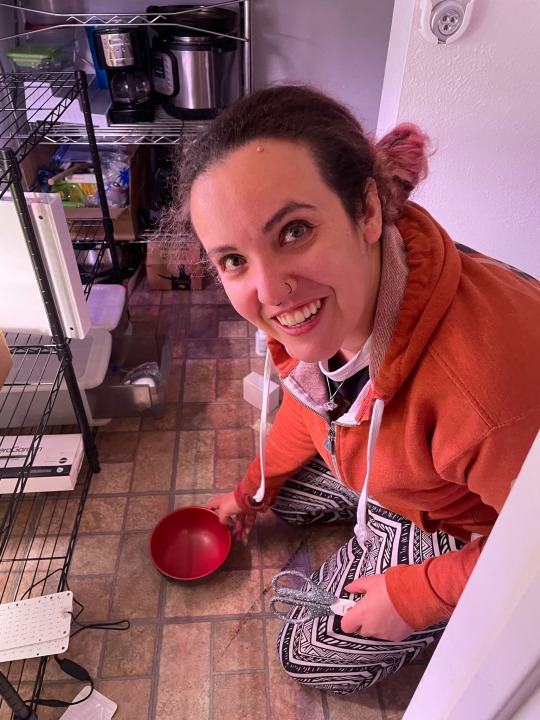

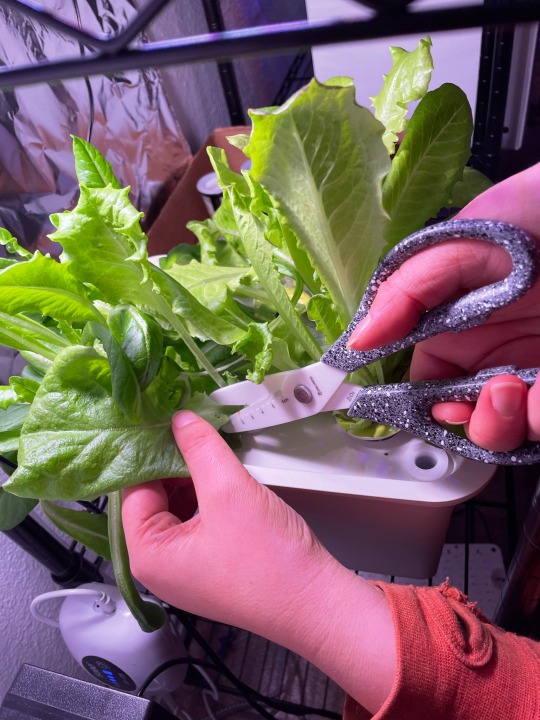
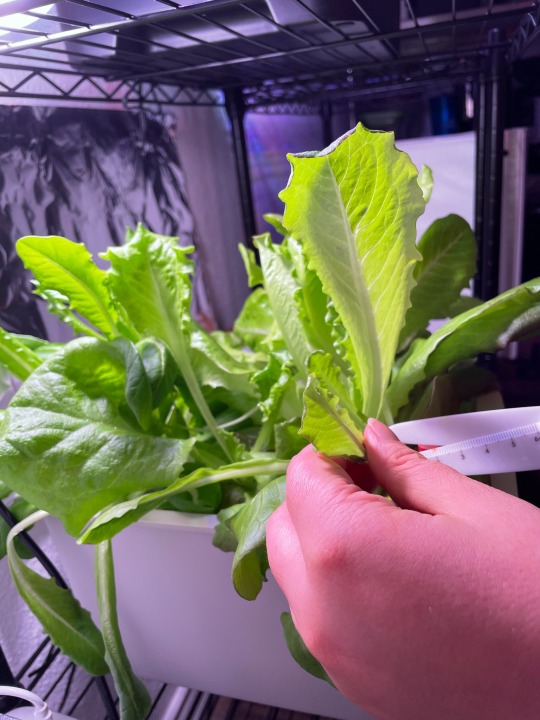
YUM YUM YUM!!!
#indoor garden#garden#hydroponic garden#hydroponics#food#lettuce#harvest#gardening#hydroponic#face reveal
9 notes
·
View notes
Text

Illustration for the LA Times on 'ponic farming in 2021
7 notes
·
View notes
Text

Learn more: https://hydroponicway.com/does-grow-light-temperature-matter
Is your grow light the right temperature for your plants?
Many people don’t realize that the temperature of their grow light is important for plant growth. In fact, adjusting the temperature on your grow light can make a big difference in the success of your indoor plants.
#sustainability#gardening#farming#agriculture#garden#hydroponics#indoorfarming#sustainable#gardening101#agritech#Urban_Farming#verticalfarming#verticalgarden#indoorgarden#future#hydroponicfarming#diy#food#healthyfood#hydroponic#hydroponicgarden#hydroponicsystem#growingmedium#growingmediums#growlight#growlights
2 notes
·
View notes
Photo

You should see the amount the plants we have helped our customers save! 💚😃 It doesn't matter what you're growing we have everything in our shop to help your plants at every stage and cycle.💪 Any plant, Any problem! 🌎 Our trained staff can get down to the nitty-gritty of your plants and help stop any issues before they arise. 💯 #HousePlants #Plants #Plantnutrients #fertilizer #npk #gardening #garden #horticulture #botany #plantlife #highdesert #Phelan, #hydroponic #friends #family #followus (at Phelan Hydro & Garden Supply) https://www.instagram.com/p/Cm0Q1pZLTDI/?igshid=NGJjMDIxMWI=
#houseplants#plants#plantnutrients#fertilizer#npk#gardening#garden#horticulture#botany#plantlife#highdesert#phelan#hydroponic#friends#family#followus
2 notes
·
View notes
Photo
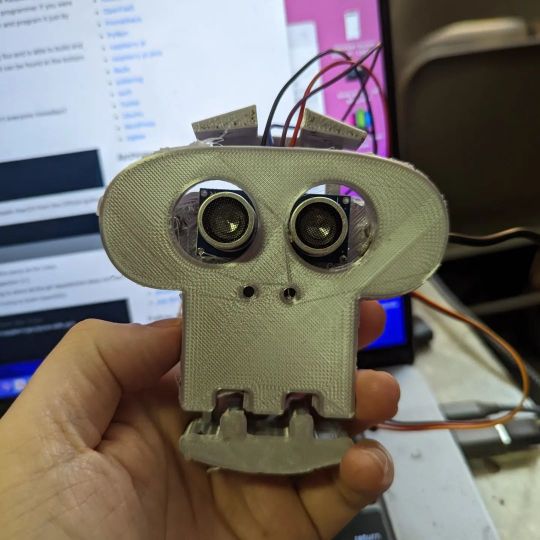
#3dprint #halloween #raspberrypi #hydroponic #aquaponic #skeleton #seedlings #plants (at New London, Pennsylvania) https://www.instagram.com/p/CkJkIE8uU9j/?igshid=NGJjMDIxMWI=
3 notes
·
View notes


